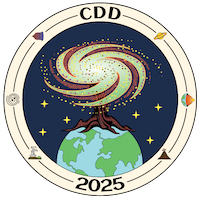Ivuna-type carbonaceous chondrites (CI) have
geochemical compositions similar to the solar
photosphere. Their sulfur (S) isotope composition might
thus reflect the average nebular gas. However, most CI
chondrites have undergone sulfur oxidation on Earth.
This may introduce a bias for the determination of S
isotope ratios of the bulk nebula, as sulfide oxidation
causes sulfur isotope...
NASA's upcoming space mission, Dragonfly, selected as the 4th mission under the New Frontiers Program, is set to explore Saturn's icy moon, Titan, in the mid-2030s. The mission's goal is to assess Titan's potential habitability. The rotorcraft lander, designed like a drone, will be equipped with the DraGMet instrument package, enabling comprehensive geochemical, climatic, meteorological, and...
Modelling SEP and GCR Atmospherics showers with Monte Carlo Simulations
Keywords: Atmospheric modelling, Radiation monitoring, High Energy physics, Monte Carlo Methods
With the growing use of integrated electronics, the impact of natural atmospheric radiations is becoming a prominent concern for both space, where...
This work aims to improve hyperspectral image processing methods for the identification and quantification of soil minerals. These methods allow the radiometric signal measured for each pixel of the image to be interpreted in terms of physico-chemical properties. Due to the limited spatial resolution of the images, the reflectance spectrum corresponding to a given pixel is generally a mixture...
Syn-eruptive monitoring of volcanic deformation and surface changes is crucial for timely hazard assessment. Spaceborne Synthetic Aperture Radar (SAR) can reliably provide visually-interpretable images of volcanic edifices at high spatial resolution during day and night, regardless of the weather conditions. Yet, most traditional change detection methods only work between SAR images acquired...

